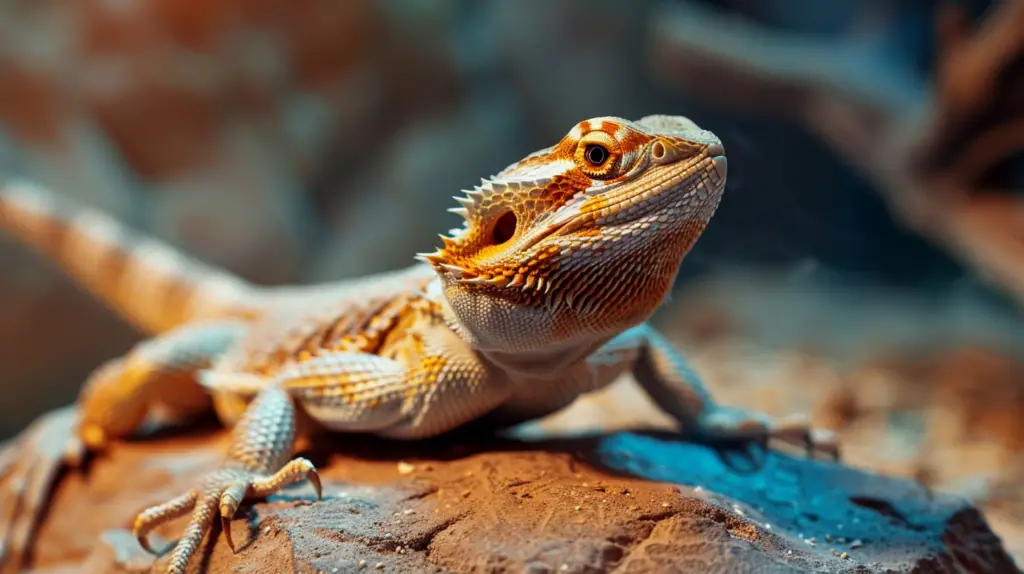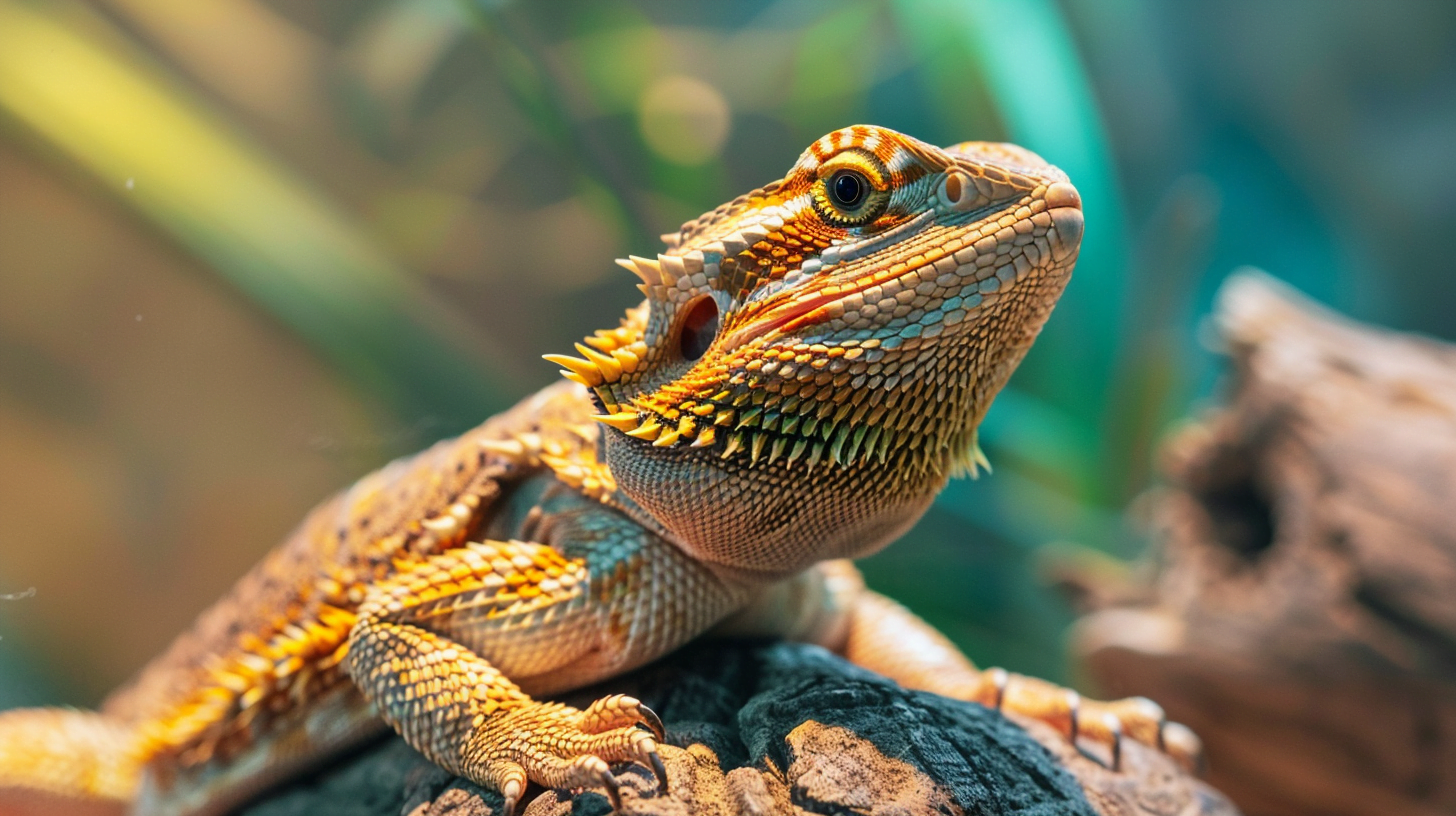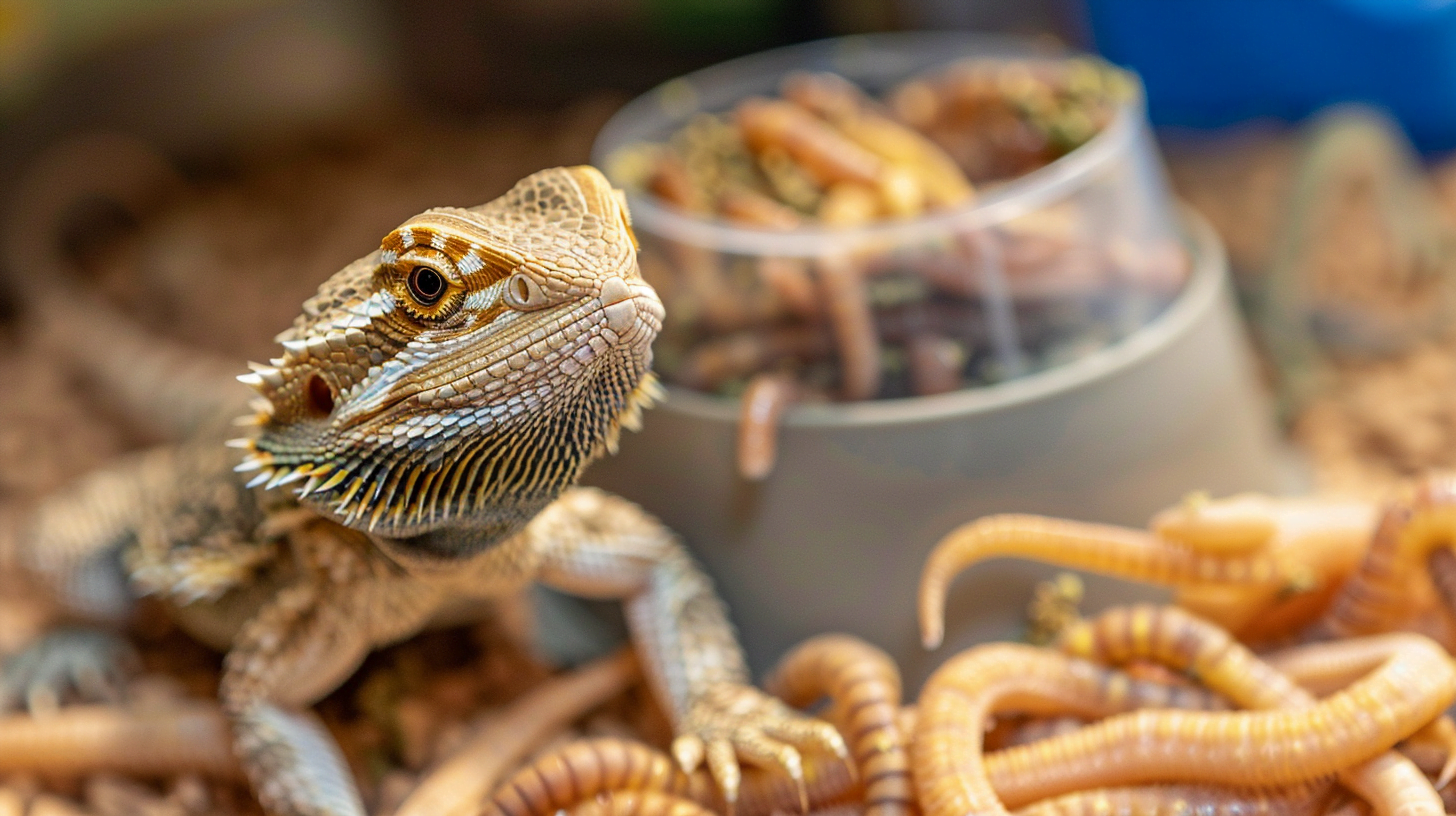Bearded dragons make fantastic pets, but to ensure their health and happiness, it’s crucial to maintain proper temperatures in their habitat, especially at night. In this comprehensive guide “How to keep a bearded dragon warm at night?”, we’ll explore the secrets to keeping your scaly friend warm and cozy all night long!
Understanding Bearded Dragon Temperature Requirements
Bearded dragons, native to the arid regions of Australia, require specific temperature ranges to thrive. During the day, they bask in temperatures between 95-105°F (35-40°C), while the cooler side of their enclosure should be around 75-85°F (24-29°C). At night, the temperature can safely drop to 65-75°F (18-24°C).
Maintaining the proper temperature is essential for your bearded dragon’s digestion, metabolism, and overall health. If the temperature is too low, they may become lethargic, lose appetite, and even develop respiratory infections. On the other hand, excessive heat can lead to dehydration and heat stress.
Creating the Perfect Nighttime Habitat
Choosing the Right Enclosure
To keep your bearded dragon warm at night, start by selecting an appropriate enclosure. A 40-gallon terrarium is suitable for most adult bearded dragons. Glass, wood, and PVC are common materials, each with different insulation properties. Ensure the enclosure is secure and well-ventilated.
Substrate Options for Retaining Heat
The substrate you choose can impact the enclosure’s ability to retain heat. Here are some common options:
- Sand: Natural-looking but can cause impaction if ingested.
- Carpet: Easy to clean but may harbor bacteria.
- Tile: Excellent heat retention and easy to sanitize.
- Newspaper: Affordable and safe but lacks aesthetic appeal.
Consider your bearded dragon’s needs and your preferences when selecting a substrate.
Heating Solutions for Bearded Dragons at Night
Under Tank Heaters (UTH)
Under tank heaters are an efficient way to provide gentle, consistent heat. They adhere to the bottom of the enclosure and come in various wattages. A general rule of thumb is to choose a UTH that covers about 1/3 of the enclosure’s floor space.
Ceramic Heat Emitters
Ceramic heat emitters emit infrared heat without producing light, making them ideal for nighttime use. Choose a wattage appropriate for your enclosure size and place it above the basking area. Always use a ceramic socket and follow safety precautions.
Night Heat Lamps
Night heat lamps, available in red, black, or blue, provide both heat and subtle illumination. Select the appropriate wattage based on your enclosure size and position the lamp above the basking spot. Create a temperature gradient by placing the heat source on one side of the enclosure.

Monitoring and Regulating Nighttime Temperatures
The Importance of Thermometers
To ensure your bearded dragon stays warm and comfortable, regularly monitor the enclosure’s temperature using thermometers. Digital thermometers are more accurate than analog ones. Place them at both the basking spot and the cooler end of the enclosure.
| Location | Temperature Range |
|---|---|
| Basking Spot | 95-105°F (35-40°C) |
| Cool Side | 75-85°F (24-29°C) |
| Nighttime | 65-75°F (18-24°C) |
Thermostats and Temperature Controllers
Thermostats help regulate heating devices by turning them on and off as needed to maintain a set temperature. Pulse and dimming thermostats are popular options. Program the thermostat according to the manufacturer’s instructions and your bearded dragon’s requirements.
Dealing with Power Outages
In case of a power outage, have backup heating options ready:
- Hand warmers or heat packs can provide temporary warmth. Place them in a sock and position them safely in the enclosure.
- Insulate the enclosure with blankets or towels to retain heat.
- Move your bearded dragon to a smaller, more easily heated container if necessary.
Other Factors Affecting Nighttime Temperatures
Several factors can influence the nighttime temperatures in your bearded dragon’s enclosure:
- Room temperature: Keep the enclosure away from drafty windows or air vents.
- Enclosure placement: Position the terrarium in a warm, draft-free area of the room.
- Seasonal changes: Adjust heating settings as needed during colder months.
Conclusion
Maintaining proper nighttime temperatures is essential for your bearded dragon’s health and well-being. By understanding their temperature requirements, creating a cozy habitat, and using appropriate heating solutions, you can ensure your scaly friend stays warm and comfortable all night long. Experiment with different setups to find the perfect balance for your bearded dragon, and give them the gift of a warm, restful night’s sleep!
FAQs
- What happens if my bearded dragon gets too cold at night?
If your bearded dragon gets too cold, they may become sluggish, stop eating, and develop health issues like respiratory infections. Maintain proper temperatures to keep them healthy. - Can I use a regular light bulb to keep my bearded dragon warm?
No, regular light bulbs do not provide the necessary heat and can disturb your bearded dragon’s sleep cycle. Use specialized heating devices designed for reptiles. - How often should I check the temperature in my bearded dragon’s enclosure?
Check the temperature at least twice a day, once in the morning and once at night. Make adjustments as needed to maintain the proper temperature range. - Is it okay to use a heating rock for my bearded dragon?
Heating rocks are not recommended as they can cause burns and inconsistent heating. Stick to overhead heating options or under tank heaters. - My bearded dragon is glass surfing at night. Could it be due to temperature issues?
Glass surfing can be a sign of stress, including temperature-related stress. Ensure the enclosure maintains appropriate nighttime temperatures and consider other potential stressors like lighting or noise.




